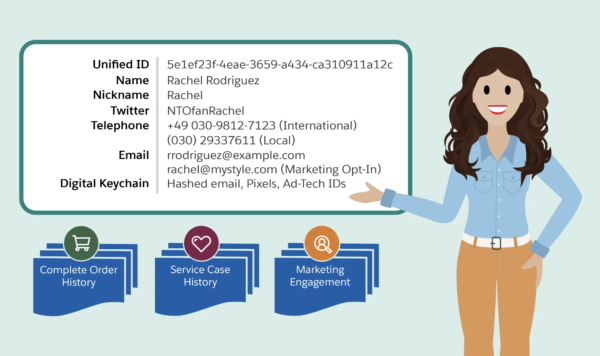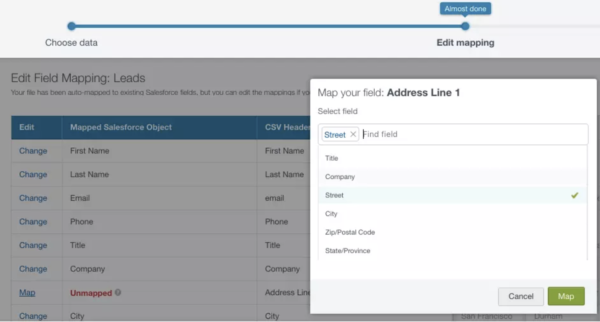Salesforce Customer Data Management: The Complete Guide
Customer expectations are changing. An increasing majority – 72% – of customers demand personalization and a seamless digital experience. For businesses, the rising importance of personalization to brand engagement drives up the value of customer data. With the timely arrival of Customer 360 Truth, capitalizing on this value and meeting customer expectations through Salesforce customer data management has never been easier.
The global market value of customer data has doubled in the last five years. However, as customer data value multiplies, so do the challenges of managing it effectively. On average, today’s enterprises collect data though more than 1000 different Software-as-a-Service (SaaS) applications and fewer than a third of these are integrated.
Lack of integration and poor customer data management makes it challenging for teams to get the information they need quickly to maintain customer satisfaction and retention. In this guide, you’ll learn how to use Salesforce tools like Customer 360 Truth for better customer data management practices.
What is Customer Data Management in Salesforce?
Customer data management refers to the collection and use of data generated when customers interact with your business. These interactions occur across many different channels including:
- Phone
- Websites
- Social Media
- Marketing Applications
In practice, customer data collection tends to be a fragmented process that passes data into partitioned databases containing inconsistencies and duplicates. Consequently, most large enterprises lack a single source of high-integrity customer data. Their systems may contain valuable data about individual customers – order histories, previous engagements, customer service issues – but their agents don’t have the tools to get this information efficiently and definitively.
Customer 360 Truth
In Salesforce, the suite of features and services referred to as Customer 360 Truth exists to combat the challenges of customer data management and data integration. In Salesforce software, Customer 360 Truth works like a customer data platform– a platform that creates a persistent database of all customer data scattered across systems. With Customer 360 Truth, Salesforce users can create unified customer profiles integrating all data sources and make them visible to all users across departments.
3 Ways to Manage Customer Data in Salesforce
With Customer 360 Truth, companies can develop more efficient and more profitable customer data management practices. Here are three essential practices to include in your data management strategy.
1. Create Unified Customer IDs across Salesforce Clouds and Other Applications
Delivering unified cross-channel customer experiences starts with consolidating everything your disparate systems know about individual customers into a single, fully visible profile. Customer 360 Truth enables the creation of Unified Salesforce IDs that connect to all clouds and integrated applications.

The clouds and applications you already use generate the data and records they need for their own isolated operations. Unified IDs aggregate the various contact records and applications profiles stored in these systems and make them visible to your teams at any touchpoint. Areas where Unified IDs can improve customer experiences include:
- Customer service agents can see how customers use your application.
- Sales associates can see purchase histories and make more personalized recommendations to customers.
- Dynamic ad servers can adapt website experiences for individual customers to enhance their digital experiences.
2. Improve Data Quality
Integrating databases and consolidating data only delivers value if the data you collect is reliable and structurally compatible. Data problems are surprisingly endemic – 88% – to most databases and cost the average company $15 million in revenue annually. Bad data comes in many forms, including:
- Missing Records: A sales database may show you have over 200 customers in the state of New York but other generated reports list fewer than 100.
- Duplicate Records: The same customer may enter your databases multiple times through different associated key-value pairs such as addresses, phone numbers, or emails.
- Non-standardized Data: A lack of data validations at entry points may result in your records containing impossibilities such as more than 50 US states as entries for state names or abbreviations were not standardized.
- Incomplete Records: Insufficient data validations can also leave your databases strewn with accounts and customers lacking critical data such as phone numbers, emails, or business names.
- Obsolete Data: If your databases don’t update regularly, any data you pull will likely contain inactive or inaccurate records.
Salesforce includes tools to improve your data quality and significantly reduce common bad data types.
- Duplicate Management and Data Integration can resolve most missing and duplicate record issues.
- com Prospector and Data.com Clean –which do require licenses – can greatly assist with data transformations and keeping databases current.
3. Import Your Existing External Data
Most companies that use Salesforce only import and integrate part of their other third-party databases. To create the most comprehensive and useful Unified IDs, you will want to consider what other data you collect separately might bring value to your operations in Salesforce.
In most cases, importing third-party data into Salesforce is a three-step process using the Data Import Wizard.

- Check for Import Incompatibilities: Compare the data validations you have in Salesforce with those in the exporting application. Reconfigure the exporting application’s validations as needed. You may, for example, need to rename column heads to match Salesforce field names.
- Run the Data Import Wizard: You can launch the Wizard from the Setup Gear You’ll then need to select the Object Type for the data you’re importing. To import, select the files you want in the browser and click Next.
- Edit Field Mapping: Check for unmapped Salesforce objects. Unmapped objects are marked in red. Select and edit those object types individually.
Custom Development in Salesforce with Rainmaker
At Rainmaker, our team of experts specializes in deploying complex Salesforce features and custom applications throughout your organization. With an average of eight years of experience in the platform, Rainmaker technical consultants can help you gain actionable insights from your customer data and develop effective data management practices.
To schedule a meeting with a consultant, contact Rainmaker today.






